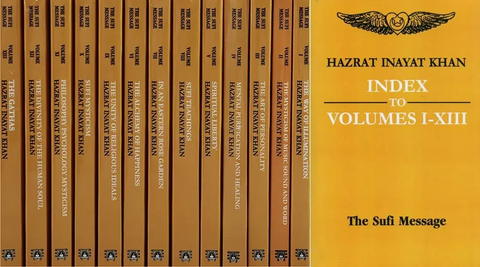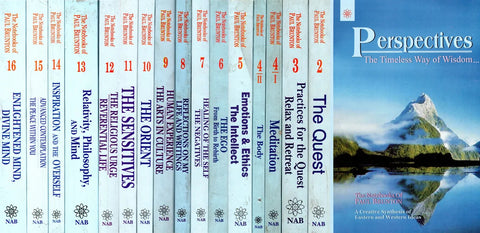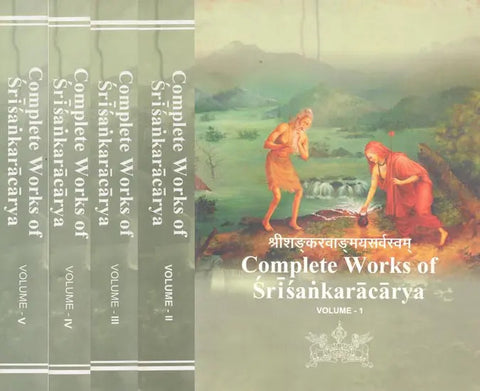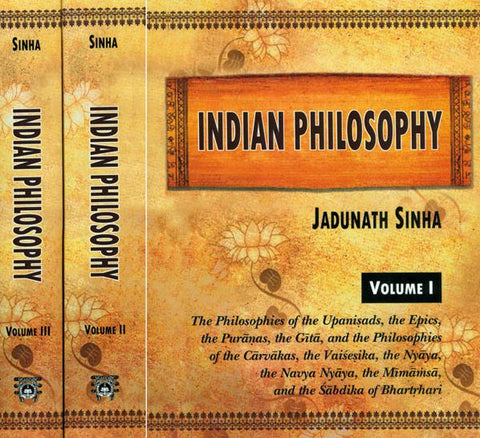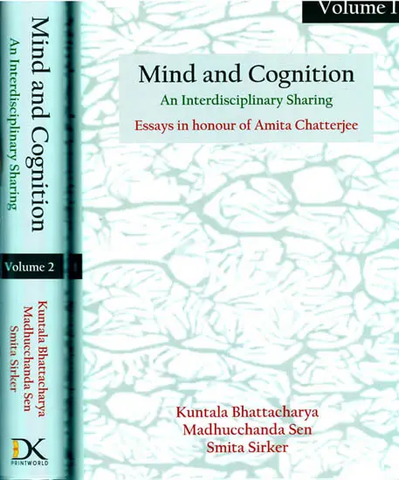Your cart is empty now.
This work is a description and explanation in fuller detail of the Serpent Power (Kundalini Shakti), and the Yoga effected through it, a subject occupying a pre-eminent place in the Tantra Shastra. It consists of a translation of two Sanskrit works published some years ago in the second volume of my series of Tantrik Texts, but hitherto untranslated.
In my work “Shakti and Shakta” I outlined for the first time the principles of “Kundali-Yoga” so much discussed in some quarters, but of which so little was known.
This work is a description and explanation in fuller detail of the Serpent Power (Rundali Shakti), and the Yoga affected through it, a subject occupying a pre-eminent place in the Tantra Shastra. it consists of a translation of two Sanskrit works published some years ago in the second volume of my series of Tantrik Texts, but hitherto untranslated. The first, entitled “Shatchakranirupana” (“Description of and Investigation into the Six Bodily Centres “), has as its author the celebrated Tantrik Purnananda Svami, a short note on whose life is given later. It forms the sixth chapter of his extensive and unpublished work on the Tantrik Ritual entitled “Shritattvachintamani “. This has been the subject of commentaries by among others Shangkara and Vishvanatha cited in Volume II of the Tantrik Texts, and used in the making of the present translation. The article here translated from the Sanskrit is by Kalicharana.
The second text called “Paduka-Panchaka” (“Fivefold Footstool of the Guru “, deals with one of the Lotuses described in the larger work. To it is appended a translation from the Sanskrit of -a commentary by Kalicharana. To the translation of both works, I have added some further explanatory notes of my own. As the works translated are of a highly recondite character, and by themselves unintelligible to the English reader, I have prefaced the translation with a general Introduction in which I have endeavoured to give (within the limits both of a work of this kind and my knowledge) a description and explanation of this form of Yoga. I have also included some plates of the Centres, which have been drawn and painted according to the description of them as given in the first of these Sanskrit Texts.
It has not been possible in the Introduction to do more than give a general and summary statement of the principles upon which Yoga, and this particular form of it, rest. Those who wish to pursue the subject in greater detail are referred to my other published books on the Tantra Shastra. In Principles of Tantra will be found general Introductions to the Shastra and (in connection with the present subject) valuable chapters on Shakti and Mantras, in my recent work, Shakti and Shakta (the second edition of which is as I write reprinting), I have shortly summarised the teaching of the Shakta Tantras and their rituals. In my Studies in the Mantra Shastra, the first three parts of which have been reprinted from the “ Vednta Kesart,” in which they first appeared, will be found more detailed descriptions of such technical terms as Tattva, Causal Shaktis, Kala, Nada, Bindu, and so forth, which are referred to in the present book. Other works published by me on the Tantra, including the “Wave of Bliss,” will be found on the page advertisements.
The following account of Purnananda, the celebrated Tantrika Sadhaka of Bengal, and author of the “Shatchakranirupana,” has been collected from the descendants of his eldest son, two of whom are connected with the work of the Varendra Research Society, Rajshahi, to whose Director, SJ. Akshaya Kumara Maitra, and Secretary, SJ. Radha Govinda Baisak, I am indebted for the following details:
Purnananda was a Rahri Brahmana of the Kashyapa Gotra, whose ancestors belonged to the village of Pakrashi, which has not as yet been identified. His seventh ancestor Anantacharya is said to have migrated from Baranagara, in the district of Murshidabad, to Kaitali, in the district of Mymensingh. In his family were born two celebrated Tantrika Sadhakas—namely, Sarvananda and Purnananda. The descendants of Sarvananda reside at Mehar, while those of Purnananda reside mostly in the district of Myinensingh. Little is known about the worldly life o Purnananda, except that 1w bore the name of Jagadananda, and copied a manuscript of the Vishnupuranam in the Shak-a year 1448 (A.D. 152C). This manuscript, now in the possession of one of his descendants named Pandit Han Kishore Bhattacharya, of Raitali, is still in a fair state of preservation. It was brought for inspection by Pandit Satis Chandra Siddhantabhushana of the Varendra Research Society. The colophon states that Jagadananda Sharma wrote the Purana in the Shaka year 1448.
This Jagadananda assumed the name of Purnananda when he obtained his Diksha (Initiation) from Brahmananda and went to Kamarupa (Assam), in which province he is believed to have obtained his “Siddhi or state of spiritual perfection in the Ashrama, which still goes by the name of Vashishthashrama, situated at a distance of about seven miles from the town of Gauhati (Assam). Purnananda never returned home, but led the life of a Paramahansa and compiled several Tantnika works, of which the Shritattvachintamani, composed in the Shaka year 1499 (A.D. 1577), Shyamarahasya, Shaktakrama, Tattvanandatarangini, and Yogasara are known. His commentary on the Kalikakarakuta hymn is well-known. The Shatchakranirupana, here translated, is not, however an independent work, but a part of the sixth Patala of the Shrtattvachintamani. According to a genealogical table of the family of this Tantrika Acharya and Virchara Sadhaka, given by one of his descendants, Purnãnanda is removed from his present descendants by about ten generations.
This work has been on hand for some five years, but both the difficulties of the subject and those created by the war have delayed its publication. I had hoped to include some other plates of original paintings and drawings in my possession bearing on the subject, but present conditions do not allow for this, and I have therefore thought it better to publish the book as it stands rather than risk further delay.
The two Sanskrit works here translated—Shat-chakranirupana C’ Description of the Six Centres, or Chakras “) and Paduka-Panchaka (“ Fivefold Footstool “)—deal with a particular form of Tantrik Yoga named Kundalini Yoga, or, as some works call it, Bhuta-shuddhi. These names refer to the Kundalini Shakti, or Supreme Power in the human body by the arousing of which the Yoga is achieved, and to the purification of the Elements of the body (Bhuta-shuddhi) which takes place upon that event. This Yoga is effected by a process technically known as Shat-chakra-bheda, or piercing of the six Centres or Regions (Chakra) or Lotuses (Padma) of the body (which the work describes) by the agency of Kundalini Shakti, which, in or4er to give it an English name, I have here called the Serpent Power.’ Kundala means co1ed. The power is the Goddess (Dev) Kundalini or that which is coiled; for Her form is that of a coiled and sleeping serpent in the lowest bodily centre, at the base of the spinal column, until by the means described She is aroused in that Yoga which is named after Her. Kundalini is the Divine Cosmic Energy in bodies (v. post). The Saptabhumi, or seven legions (Lokas),’ are, as popularly understood, an exoteric presentment of the inner Tantrik teaching regarding the seven centres.’
The Yoga is called Tantrik for a twofold reason. It will be found mentioned in the Yoga Upanishads which refer to the Centres, or Chakras, and in some of the Puranas. The treatises on Hatha yoga also deal with the subject. We find even similar notions in systems other than the Indian, from which possibly in some cases they have been borrowed. Thus, in the Risala-i-haq-numa, by Prince Mahomed Dara Shikoh,’ a description is given of the three centres “Mother of Brain,” or “Spherical heart” (Dil-i-muddawar); the “Cedar heart” (Dil-i-sanowbarj); and the Dil-i-nilofari, or “Lily heart “, Other references may be found in the works of the Mahomedan Sufis. So some of the Sufi fraternities (such as the Naqshbandi) are said to have devised, or rather borrowed, from the Indian Yogi8 the kundalini method as a means to realization. I am told that correspondences are discoverable between the Indian (Asiatic) Shastra and the American-Indian Maya Scripture of the Zunis called the Popul Vuh. My informant tells me that their “air tube” is the Sushumna; their “twofold air tube” is the Nadis Ida and Pingala. “Hurakan,” or lightning, is Kundalini, and the centres are depicted by animal glyphs. Similar notions have been reported to me as being held in the secret teaching of other communities. That the doctrine and practice should be widespread, we might expect, if it has a foundation in fact. This form of Yoga is, however, in particular, associated with the Tantras or Agamas, firstly, because these Scriptures are largely concerned therewith, in fact, such orderly descriptions in practical full detail as have been written are to be found chiefly in the Hathayoga works and Tantras which are the manuals, not only of Hindu worship but of its occultism. Next, Yoga through action on the lowest centre seems characteristic of the Tantrik system, the adepts of which are the custodians of the practical knowledge whereby the general directions in the books may be practi0ally applied. The system is of a Tantrik character also in respect of. its selection of the chief centre of consciousness. Various people have in antiquity assigned to various parts of the body the seat of the “soul” or life, such as the blood, the heart and the breath. Generally, the brain was not so regarded. The Vaidik system posits the heart as the chief centre of Consciousness—a relic of which notion we still preserve in phrases such as “take it to heart” and “learn by heart “. Sadhaka, which is one of the five functions of Pitta,’ and which is situated in the heart, indirectly assists in the performance of cognitive functions by keeping up the rhythmic cardiac contractions, and it has been suggested ‘ that it was perhaps this view of the heart’s construction which predisposed Indian physiologists hold it to be the seat of cognition. According to the Tantras, however, the chief centres of consciousness are to be found in the Chakras of the cerebrospinal system and in the upper brain (Sahasrara), which they describe, though the heart is also recognized as a seat of the Jivatma, or embodied spirit, in its aspect as a vital principle or Prana It is for the reasons mentioned that the first verse of the Shat-chakra-nirupana here translated speaks of the Yoga which is to be achieved “according to the Tantras” (Tantranusarena)—that is, as kalicharana, its Commentator, says, “following the authority of the Tantras
Recently some attention has been given to the subject in Western literature of the occult kind. Generally, its authors and others have purported to give what they understood to be the Hindu theory of the matter, but with considerable inaccuracies. These are not limited to the works of the character mentioned. Thus, to take but two instances of these respective classes, we find in a well-known Sanskrit dictionary’ that the Chakras are defined to be ‘ circles or depressions (sic) of the body for mystical or chiromantic purposes,” and their location has in almost every particular been wrongly given. The Muladhara is inaccurately described as being “above the pubis “. Nor is the Svadhishthana the umbilical region. Anahata is not the root of the nose, but is the spinal centre in the region of the heart; Vishuddha is not “the hollow between the frontal sinuses,” but is the spinal centre in the region of the throat. Ajna is not the fontanelle or union of the coronal and sagittal sutures, which are said to be the Brahmarandhra,’ but is in the position allotted to the third eye, or Jnanachakshu. Others, avoiding such gross errors, are not free from lesser inaccuracies. Thus, an author who, I am informed, had considerable knowledge of things occult, speaks of the Sushumna as a “force” which” cannot be energised until Ida and Pingala have preceded accompaniment of violent shock the spinal marrow,” and which, ‘sacral plexus, passes along the on the brain, with the result “himself to be an unembodied abyss of empty space, struggling unutterable “. He also writes Kundalini is called Nadi; that it,” “passes the through each section of the awakening of the spinal cord and impinges that the neophyte finds soul alone in the black against dread and terror that the “current” of the Sushumna extends as a nerve to the Brahmarandhra; that the Tattvas are seven in number; and other matters which are inaccurate, The Sushumna is not a “force,” and does not pass and impinge upon anything, but is the outer of the three Nadis, which form the conduit for the force which is the arousing of the Devi called Kundalini, the Cosmic Power in bodies, which force is not itself a Nadi, but passes through the innermost, of Chitrini Nadi, which terminates at the twelve-petalled lotus below the Sahasrara, from which ascent is made to the Brahmarandhra. It would be easy to point out other mistakes in writers who have referred to the subject. It will be more profitable if I make as correct a statement as my knowledge admits of this mode of Yoga. But I desire to add that some modern Indian writers have also helped to diffuse erroneous notions about the Chakras by describing them from what is merely a materialistic or physiological standpoint. To do so is not merely to misrepresent the case, but to give it away; for physiology does not know the Chakras as they exist in themselves—that is, as centres of consciousness—and of the activity of Sukshma Prana-vayu or subtle vital force; though it does deal with the gross body which is related to them. Those who appeal to physiology only are likely to return non-suited.
Delivery and Shipping Policy
- INTERNATIONAL SHIPPING
- Rs.1000-1100/kg
- ESTD. Delivery Time: 2-3 weeks (depending on location)
- Bubble Wrapped with Extra Padding
- NATIONAL SHIPPING
- NCR: Rs. 30/half kg
- Standard: Rs. 80/half kg
- Express shipments also available on Request
- ESTD. Delivery Time: Ranging from 1-4 days up to 7 business days (Depending on your choice of Delivery)
- TRACKING
- All orders; national or international, will be provided with a Tracking ID to check the status of their respective orders
- Depending on the Shipping Service, Tracking ID may be used on their respective tracking portals
Frequently Asked Questions (FAQs)
Domestic Shipping: 3-4 Days (after shipping)
International Shipping: 1-2 weeks (based on your location)
You will receive an email once your order has been shipped or you can email us if you didn't receive tracking details (info@mlbd.co.in)
Every book that we sell is the latest edition except all the rare books
Yes, we do provide free shipping, only on domestic orders (within India) above Rs.1500








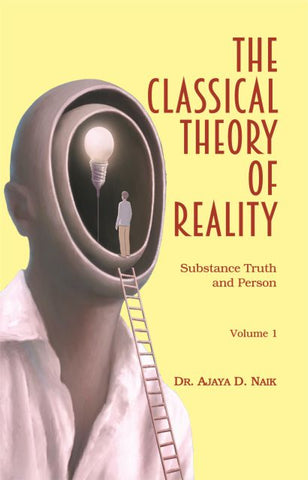
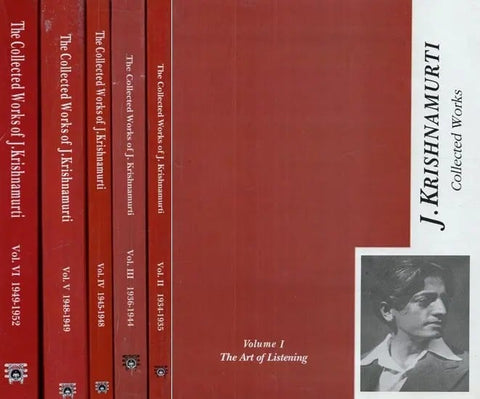

![A HISTORY OF INDIAN PHILOSOPHY [5 VOLUMES] by Surendranath Dasgupta](http://www.motilalbanarsidass.com/cdn/shop/products/HISTORYOFINDIANPHILOSOPHY_large.jpg?v=1675238163)
